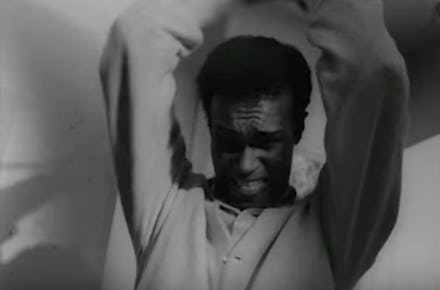George Romero, godfather of zombie cinema, was also a pioneer for racial horror films like ‘Get Out’

Shortly after news broke Sunday that George Romero had died, Jordan Peele — writer and director of celebrated horror film Get Out (2017) — penned a simple tribute to the filmmaker.
“Romero started it,” Peele wrote on Twitter. A movie still of Duane Jones — the black star of Romero’s 1968 zombie masterpiece Night of the Living Dead — accompanied the caption, highlighting an overlooked part of the revered director’s legacy.
Romero wasn’t just the godfather of the zombie horror film sub-genre — although his movies Night of the Living Dead, Dawn of the Dead (1978), Day of the Dead (1985), Land of the Dead (2005), Diary of the Dead (2007) and Survival of the Dead (2009) almost singlehandedly created it.
He was also an originator of the “social thriller,” a term popularized by Peele but manifested in earlier films like The Stepford Wives (1975) and Rosemary’s Baby (1968). Social thrillers blend the tropes and trappings of suspense cinema with explorations of race, class, gender politics and related social issues.
The roots of the genre lie with Night of the Living Dead, a film that more or less stumbled into casting a black actor in the lead role and, as a result, infused the film with its main racial metaphor. When Duane Jones — a multilingual graduate student at New York University — read for the part of Ben, even Rudy Ricci, the white actor for whom the role was originally written, was forced to admit the filmmakers had found their star.
“[This] is the guy that should be Ben,” Ricci said at the time, according to the Wrap.
Over the course of the film, Ben goes from being a savior to the white refugees holed up in a remote farmhouse to a brutal survivalist, killing off infected members of his party with ruthless disregard for sentiment. At the film’s grim conclusion, Ben is the lone survivor after zombies lay siege to the house. But when a group of white travelers see him, they mistake him for one of the undead, whereupon they shoot him and incinerate his body.
Romero was intentional about making Ben a character who could be played by an actor of any race. But in 1968, the year Dr. Martin Luther King Jr. was assassinated, it was impossible to read Ben’s demise as anything but symbolic of the white violence and racial unrest that was all over the evening news. Paired with the film’s gritty black-and-white presentation, this made for an uncommonly bleak and unsettling movie-going experience.
“The kids in the audience were stunned,” critic Roger Ebert wrote for the Chicago Sun-Times when the movie was released. “There was almost complete silence. ... When the hero is killed, that’s not an unhappy ending but a tragic one: Nobody got out alive. It’s just over, that’s all.”
It was an ending Jones reportedly insisted upon, even as Romero toyed with having Ben survive.
“I convinced George that the black community would rather see me dead than saved, after all that had gone on, in a corny and symbolically confusing way,” Jones said, according to the Wrap. “The heroes never die in American movies. The jolt of that and the double jolt of the hero figure being black seemed like a double-barreled whammy.”
Jones’ idea proved to be influential. Decades later, after horror films became known — often to the point of parody — for the enthusiasm with which they kill off black characters, Peele got his opportunity to invert what had become a formula.
Chris, the hero of Get Out, survives most of the film only to find himself staring down a fate similar to Ben’s in Night of the Living Dead. After escaping the clutches of his white girlfriend’s murderous family and leaving a trail of their dead bodies behind him, the black protagonist looks up from the carnage to see a police car bearing down on him.
Americans in 2017 know what violence can transpire when black men encounter police on a good day. In this case, white bodies are involved. We are sure this cannot end well. The relief that sweeps over audiences when it’s revealed that Rod, Chris’ best friend, is behind the wheel of the car is an unexpectedly upbeat retort — and homage — to the bleak fate that met Ben nearly 50 years earlier. Only in this case, the black hero lives.